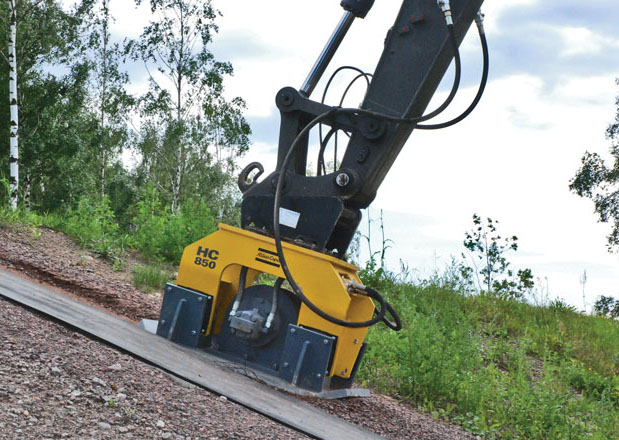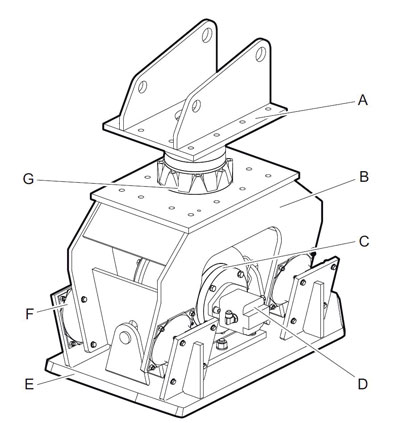COMPACT EXCAVATOR – An Ounce of Prevention
 Coupled with the versatility of mini excavators, hydraulic vibratory compactor attachments are the most productive way to compact ground over trenches and along embankments where conditions like steep slopes prohibit the use of roller-type compactors. What’s more, the impact force from carrier-mounted compactors can also be used to drive supports, uprights and sheeting into the ground.
Coupled with the versatility of mini excavators, hydraulic vibratory compactor attachments are the most productive way to compact ground over trenches and along embankments where conditions like steep slopes prohibit the use of roller-type compactors. What’s more, the impact force from carrier-mounted compactors can also be used to drive supports, uprights and sheeting into the ground.
Keith Becker, the product development specialist for Atlas Copco Construction Tools who oversees the company’s compactor line in the United States, says contractors are finding that most compacting tasks are done better and faster with attachment models. If the combination has any drawback at all, it might be lack of education regarding upkeep.
“The problem with a compactor attachment is that it’s an attachment. Some operators will want to treat it like the bucket, running it till it falls off,” says Becker. Of course, the best maintenance plan might begin at purchase.
Oil Bath Lubrication
Buy a name-brand model, Becker says: “All major manufacturers have design improvements that make mini attachments more robust. Take bearings, which used to be the No. 1 wear item. Major brands have all gone to continuous oil bath systems. It’s similar to what your car’s crankcase does for your engine.” He says owners can still choose models that require them to grease the bearings every eight hours of use, but warns, “That’s always the first maintenance item to get neglected.”
Offset Isolators
Isolators are the next wear concern. Atlas Copco offsets the suspension brackets on its models 15 degrees to protect these rubber dampeners. This slight offset transfers impact force more efficiently to the vibrator plate, reducing energy previously misdirected to shear stress. Becker says more efficient compression reduces stress on the whole compactor and advises consumers to look for a similar offset among manufacturers across the industry soon, perhaps with slight variances. “Their angle might be 17 degrees or 13 degrees, whatever gives optimum performance from their overall design,” he explains.
Flow Control Valves
Almost all compactor makes in the 6-ton carrier class or smaller are designed for maximum hydraulic flow of 30 gpm at 2,200 psi, so flow control is built into the units. Quality manufacturers uses an integral control valve allowing hydraulic flow to return directly to the tank, preventing both over-speed in the rotating group and excessive pressure in the pressure line. Flow control is a particularly important feature when compactors will be mounted to carriers with varying hydraulic characteristics.
Operator Maintenance
Manufacturers have decreased operator maintenance requirements down to just a few duties. Following these steps will get the longest life from your attachment’s components. Secure the carrier to prevent unexpected movement before working with the attachment. Use plain water to clean the attachment, making sure water contaminated by hydraulic oil or cutter grease is collected and disposed of in accordance with applicable environmental regulations.

Finally, inspect all bolts and lock pins that connect the attachment to the carrier daily. Tighten all screw connections to owner’s manual specifications at least weekly. Inspect the rotor and outer housings and the adapter plate for cracks during this time as well. Last, but not least, change the bearing bath oil annually.
Joseph Bradfield is senior writer and editor for Ellenbecker Communications, based in Round Lake, Minn.




